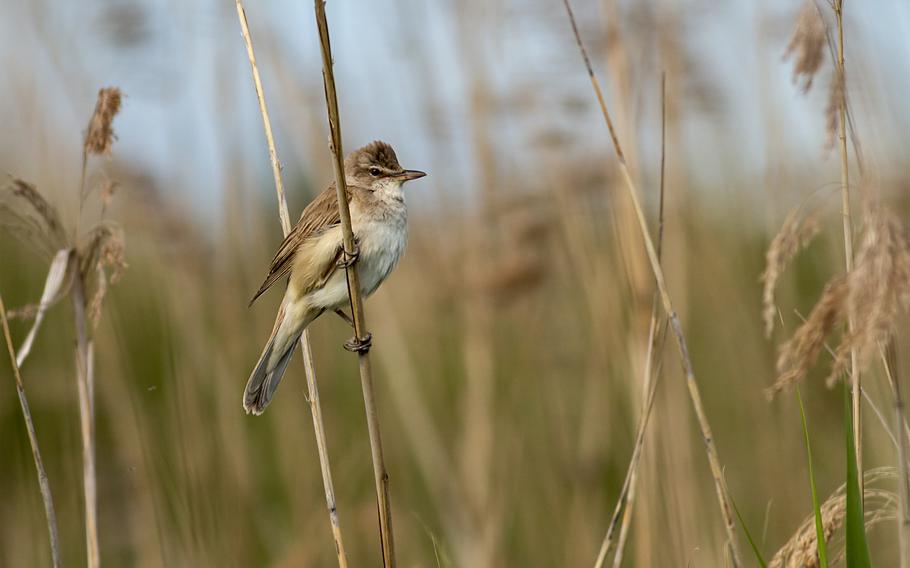
Warblers are among the bird species that can be spotted in Europe this time of year. (iStock)
In a universe full of rather obscure dates and holidays, you could be forgiven if World Migratory Bird Day somehow slipped off your radar. This semi-annual global campaign, timed to coincide with peak migration seasons, aims to raise awareness of migratory birds and the need for international cooperation to conserve them. The campaign’s autumn edition, which falls on Oct. 9 in 2021, is titled “Sing, Fly, Soar – Like a Bird!” and is meant to draw attention to birdsong and flight.
Nature’s global ambassadors, migratory birds pass through many countries as they make way between their breeding sites and southern wintering areas. Many of Europe’s most intriguing species are travelers along the African-Eurasian Flyway, three distinct flyways connecting Europe and northern Asia with the Mediterranean, Middle East and Africa.
Along the East Atlantic Flyway, the Wadden Sea is one of the world’s most important wetlands for migratory waterbirds. This unbroken system of tidal sand and mud flats stretching between the Netherlands and Denmark sees some 10 million migratory birds stop to refuel as they pass between their Arctic breeding grounds and wintering areas in West Africa. Likely sightings might include that of the Eurasian Curlew, Common Eider, Black-legged Kittiwake, Spoonbill, Brent Goose, Red Knot, Dunlin or Eurasian Wigeon.
The Black Sun phenomenon, known as Sort Sol in Danish, refers to tens of thousands of starlings in flight, tracing patterns that resemble an intricate dance and in such multitude as to block out the sun. The experience awaits off Denmark's western coast just before sunset from March to April and again from mid-September to October.
The migratory route crossing over the Balkans and the Adriatic Sea to Africa, the so-called Adriatic Flyway, is treacherous along certain stretches of the Balkan coast, where bird hunters shoot and kill ducks, cormorants, raptors and songbirds in order to consume or sell them to supplement their incomes. Just how many birds perish along this route annually is unknown, but it is widely believed they number in the millions.
A chance to not only observe but to make a positive impact is offered by the Association Biom and Učka Nature Park in Croatia. The Ornithological Camp Učka seeks volunteers to help track the birds on their autumn migration across Učka and assist experts in ringing them, a process that helps scientists learn more about their migration routes and life spans. The camp typically runs from the second half of August to the beginning of September. Online: biom.hr/en/ornithological-camp-ucka-2021
The Black Sea and Mediterranean Flyway links Eastern Europe and Western Asia to sub-Saharan Africa. For birds flying this route, the Mediterranean constitutes a significant obstacle, particularly for large species such as raptors, storks and cranes, which rely on updrafts and thermals to remain aloft. Migration is concentrated along several narrow straights and ‘land bridges’ including the Messina Straight between mainland Italy and Sicily; many birds also fly south by way of Malta, an under-the-radar destination for birdwatchers. Although illegal bird hunting has long plagued the island, some safe havens do exist, including the Għadira, Simar and Salina Nature Reserves. At the Buskett Special Area of Conservation, raptors such as Honey Buzzards and Marsh Harriers can be spotted roosting in flocks during the autumn months. Online: birdlifemalta.org
One need not travel extensively to observe abundant bird life. The following is a list of good bets within reasonable driving distance from U.S. military installations in Europe.
Grafenwöhr: The “Vogelinsel Altmühlsee” (Bird Island) near Treuchtlingen offers the chance for encounters with kite, nightingale, woodpeckers, swans, cormorants, herons, warblers and many other species. Online: tinyurl.com/5ehfrm6s
Kaiserslautern Military Community: The Haff Réimech Wetland, situated in a former gravel pit, is considered Luxembourg’s premium birding area. More than 260 species have been identified there, including the Little Bittern, Great Reed Warbler and Black-necked Grebe. The Biodiversum Nature Centre makes a logical start to one’s visit. Online: biodiversum.lu
Stuttgart: Rosenstein Park, southwest Germany’s largest English garden, features many old trees that attract abundant bird life, including woodpeckers, swans, buzzards, heron and the Long-eared Owl. Online: tinyurl.com/3anvxjpy
Wiesbaden: “Weinberge bei Rüdesheim” refers to southwesterly exposed vineyards with warm and dry steep slopes that provide sanctuary to Peregrine Falcon, Red-backed Shrike and other species. Online: tinyurl.com/pphrh2t8
Sigonella: Forte Siacci in the Messina Strait makes a great lookout point from which to observe storks, raptors and other migratory birds. Online: tinyurl.com/3xpx23ep
Souda Bay: The Agia Reservoir, six miles south of Chania, is the place to see crake, bittern, herons and raptors. Online: tinyurl.com/22jef5kz
Mildenhall: The Titchwell Marsh Nature Reserve in the northern part of Norfolk, with its woodlands, marshes, lagoons and beach, offers space for many species of shore birds and songbirds, including finches, warblers, thrushes, bitterns, ducks and geese. Online: tinyurl.com/3c6kuen9